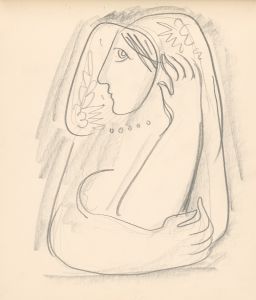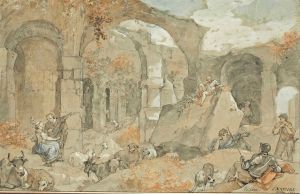
Self-Portrait in Rome
A hand-painted replica of Horace Vernet’s masterpiece Self-Portrait in Rome, meticulously crafted by professional artists to capture the true essence of the original. Each piece is created with museum-quality canvas and rare mineral pigments, carefully painted by experienced artists with delicate brushstrokes and rich, layered colors to perfectly recreate the texture of the original artwork. Unlike machine-printed reproductions, this hand-painted version brings the painting to life, infused with the artist’s emotions and skill in every stroke. Whether for personal collection or home decoration, it instantly elevates the artistic atmosphere of any space.
Horace Vernet's Self-Portrait in Rome is a painting created by the French artist Horace Vernet during his time in Rome. Vernet, born in 1789 and active during the 19th century, was a prominent painter known for his depictions of historical, military, and genre scenes. This self-portrait is one of the works that reflect his personal identity and artistic style.
The painting was completed in 1820, during Vernet's stay in Rome, where he was influenced by the city's rich artistic heritage and classical traditions. In this self-portrait, Vernet presents himself in a confident and direct manner, showcasing his role as an artist. He is depicted wearing contemporary clothing, which contrasts with the classical surroundings often associated with Rome. This choice highlights Vernet's modernity and his connection to the artistic movements of his time.
The composition of the painting is straightforward, focusing on Vernet's face and upper body. His expression is calm and self-assured, reflecting his status as an established artist. The use of light and shadow in the portrait demonstrates Vernet's technical skill and his ability to create a sense of depth and realism. The background is relatively simple, ensuring that the viewer's attention remains on the artist himself.
Self-Portrait in Rome is significant not only as a personal depiction of Vernet but also as a representation of the broader artistic trends of the early 19th century. During this period, many artists traveled to Rome to study its classical art and architecture, which greatly influenced their work. Vernet's self-portrait serves as a testament to his time in the city and his engagement with its artistic legacy.
The painting is currently housed in the Musée des Beaux-Arts in Bordeaux, France. It remains an important example of Vernet's work and provides insight into his artistic identity and the cultural context of his era.


















